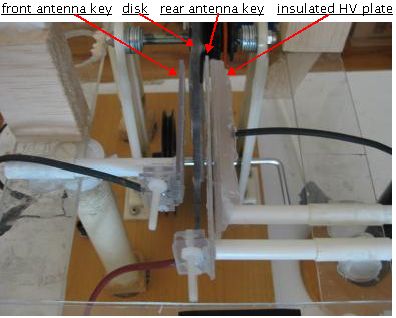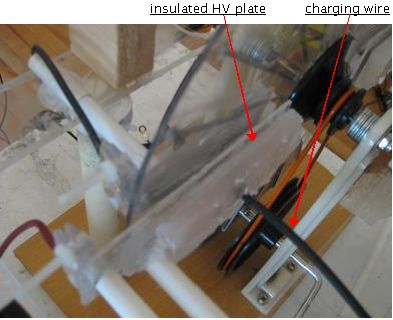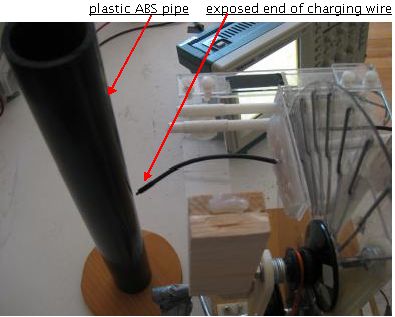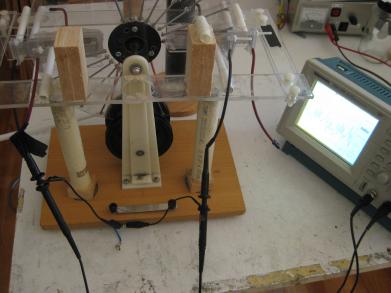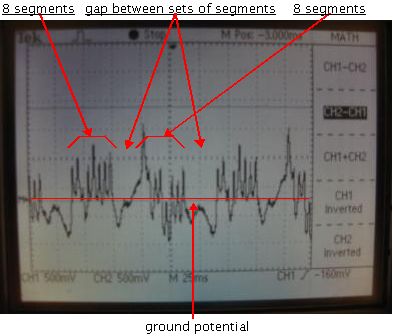Having been a while since I last showed anything of what I am up to re
my ongoing testatika experiments, here's a snapshot of where I'm at today.
High voltage has a tendency to leak and
the smaller the parts, the harder to make leakless, such as with my
small machine testbed. So I've been working
on my 276mm diameter disk instead. It uses parts from
a Wimshurst machine I
bought off of ebay.
All of the completed testatika disk machines use wires for their segments.
This may be because wires are well rounded and are less prone to leakage.
3kw machine
 |
|
dual disk
small machine
 |
|
single disk
small machine
 |
|
tandem 2
 |
|
Also, the single disk small machine has two plates visible from the
back that cover almost the whole area except where the shaft is in
the middle. These may be well insulated plates that are kept at
high voltage. One report said that you could stop this small machine
by holding a metal plate against these two. This hints that the plates
contain high voltage and holding a metal plate near them could be interfering
with them inductively.
So as the photos below show, I've created a well insulated high voltage
plate for putting behind the disks at either side by embedding a thick
copper plate in plastic and wax, leaving only a single wire exposed for
charging the plate.
I charge only one back plate and leave the other one at around ground
potential. To charge it I triboelectrically charge a plastic ABS pipe
(I rub it with a cloth) and place the pipe near the exposed end of the
plate's charging wire. So I charge it inductively. I tried using a
small Van de Graaff machine instead but the voltage was too high and
the insulated plate started arcing through the wax and around to the
rear antenna key.
It take around a half hour to make one woven wire segment so at this point I
have only two sets of eight on the disk.
Here's some scope output. Each spike (or full wave, I'm not sure yet) is around 500mV
though I've had 1 or 2 volts at times.
Notice in the above scope output that it's hard to tell if they are spikes
or full waves. Also, the base voltage that the spikes ride on varies all
over the place, sometimes going below ground potential and sometimes above.
From toying around, this seems largely due to unwanted charge on the plastic
disk. Care has to be taken not to rub or brush anything against the disk
for fear of placing an unwanted charge at any one spot. For this reason I
may make a new one with with no plastic, only wires extending radially outward.
This may also be the reason that in the 3kW machine and the tandem machines,
flat metal strips are on the disk surface between the wires, another
thing to be tried. Hyde may have addressed this problem with the
"hyde generator"by
removing pie shaped portions of the plastic radially. However,
Hyde had to turn his disks up to around 6000 RPM to get the effect, and
from my experience with my own hyde
generator these cut-out pieces create a lot of drag. Luckily, something
about the testatika, perhaps the use of mesh and perforated metal, is
possibly allowing the same effect at much lower RPMs.




